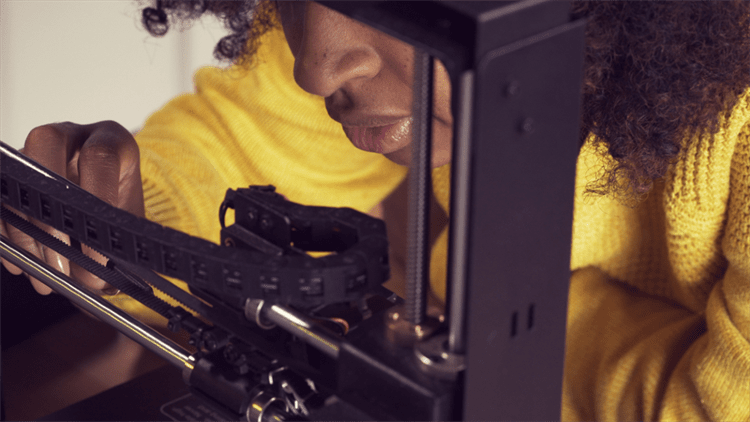Researchers from the University of Delaware are combining thermoset polymers with carbon fiber to make a composite for their new technique: localized inplane thermal assisted (LITA) 3D printing. Carbon fibers are strategically positioned with spaces to be filled with a liquid polymer that “wicks” into the material structure. Polymers may also fill the fibers if they are porous enough. The fibers are then heated, curing the liquid polymer and allowing for a 3D printed structure to form.
“Heating also decreases the viscosity of the polymer, changing its physical properties, and helps the polymer flow easily. Heating also helps the polymer to completely wet the fibers without forming voids,” author Lakshmi Supriya, PhD. explains in her paper, “Cost Efficient LITA 3D Printing Technology for Polymer Composites.”
With the strength of the carbon fibers, the polymer is improved; however, in most cases up until Supriya and her research team created their new technique, thermoplastics have been relied on as they melt easily when exposed to higher temperatures. They often do not exhibit good mechanical properties though—and especially if reinforcement fibers are not continuous, leading Supriya and the research team to expect much better results with this composite, bolstered by continuous carbon fibers. Other effective composites being used in 3D printing too may rely on other metal fillers and fibers or inorganic molecules. The whole point is usually to make a stronger part that is also lightweight.
One of the most beneficial and unique aspects of LITA 3D printing is that because curing occurs earlier in the process, it is not required later—meaning new savings in time and energy for users; in fact, up to several hours could be saved in eliminating that step. The process is faster overall too, as well as offering “reliability and repeatability in making complex shapes.”
Robotics are also employed here in a system comprised of a printhead that holds carbon fibers, a Joule heater, and distributes resin. A robotic arm is responsible for all movement of the printhead, working on substrates or in free space. The researchers 3D printed a variety of samples during the study, to include a 2D substrate, a 3D star, and conformal printing on a cylindrical rod. Ultimately, they reported having the best success in terms of tensile strength with industrial-grade carbon fibers and liquid epoxy.
These materials and the new technique may prove to be promising in applications in infrastructure such as building bridges, as well as aeronautics in creating parts for planes. The researchers expect that this new technique will also cut down on labor, tooling, and costs associated with defects.
While the majority of carbon fiber 3D printing processes on the market rely on thermoplastics, LITA is not the first technology to combine thermosets with continuous carbon fiber reinforcement. In particular, Continuous Composites uses a seven-axis robotic arm to cure a thermoset resin as printing takes place.
[Source / Images: “Cost Efficient LITA 3D Printing Technology for Polymer Composites” ; AZO Materials]Subscribe to Our Email Newsletter
Stay up-to-date on all the latest news from the 3D printing industry and receive information and offers from third party vendors.
Print Services
Upload your 3D Models and get them printed quickly and efficiently.
You May Also Like
The Dental Additive Manufacturing Market Could Nearly Double by 2033, According to AM Research
According to an AM Research report from 2024, the medical device industry, specifically in dentistry, prosthetics, and audiology, is expected to see significant growth as these segments continue to benefit from...
Heating Up: 3D Systems’ Scott Green Discusses 3D Printing’s Potential in the Data Center Industry
The relentless rise of NVIDIA, the steadily increasing pledges of major private and public investments in national infrastructure projects around the world, and the general cultural obsession with AI have...
AM Research Webinar Explores Continuum’s Sustainable Metal Additive Manufacturing Powders
Metal additive manufacturing (AM) powder supplier Continuum Powders is working to develop solutions that empower industries to reduce waste and optimize their resources. An independent life cycle assessment (LCA) of...
3D Printed Footwear Startup Koobz Lands $7.2M in Seed Round
California-based Koobz is focused on reshoring the U.S. footwear supply chain with advanced manufacturing processes, including 3D printing. The startup just announced that it has added $6 million to its...

































